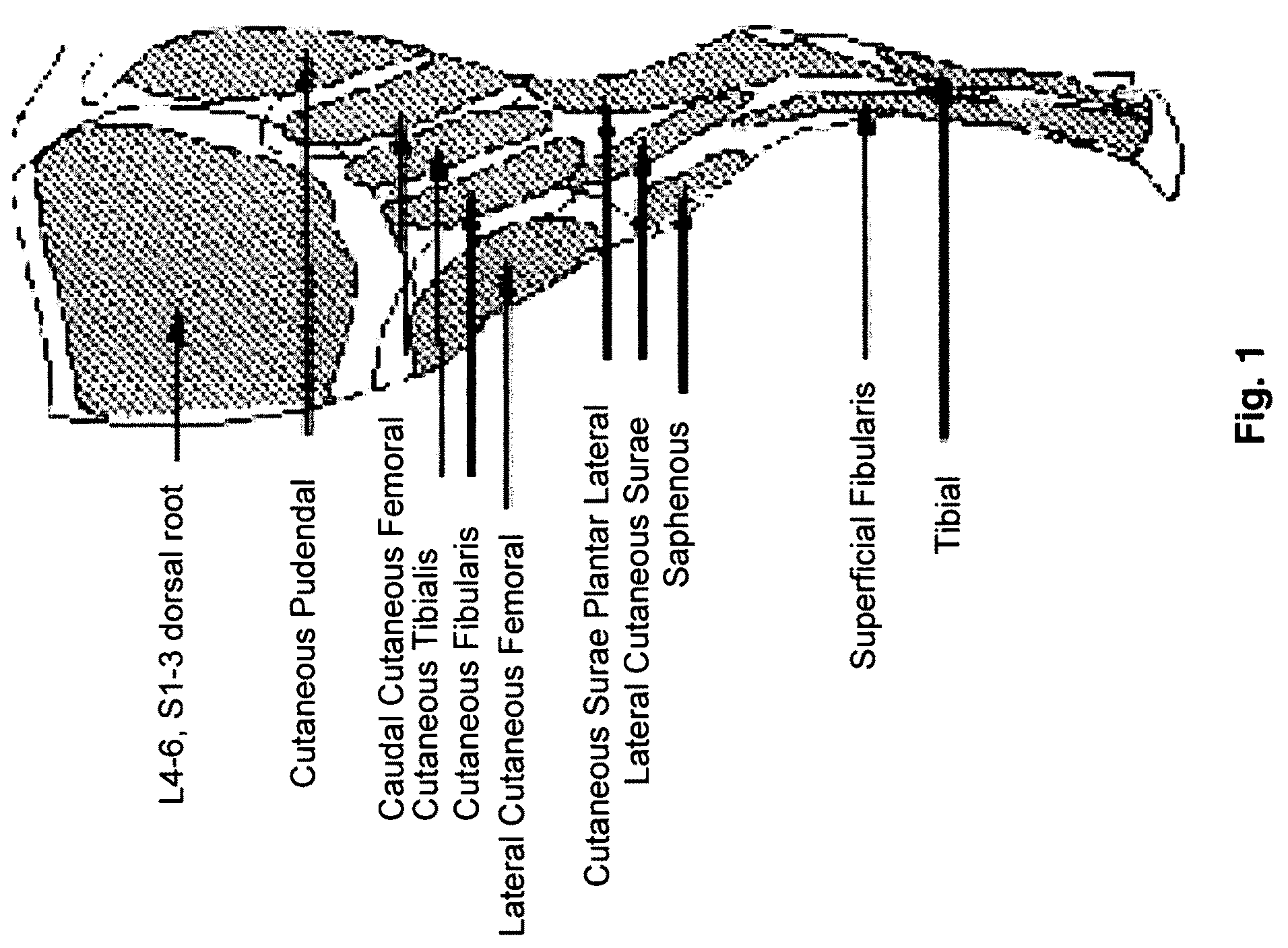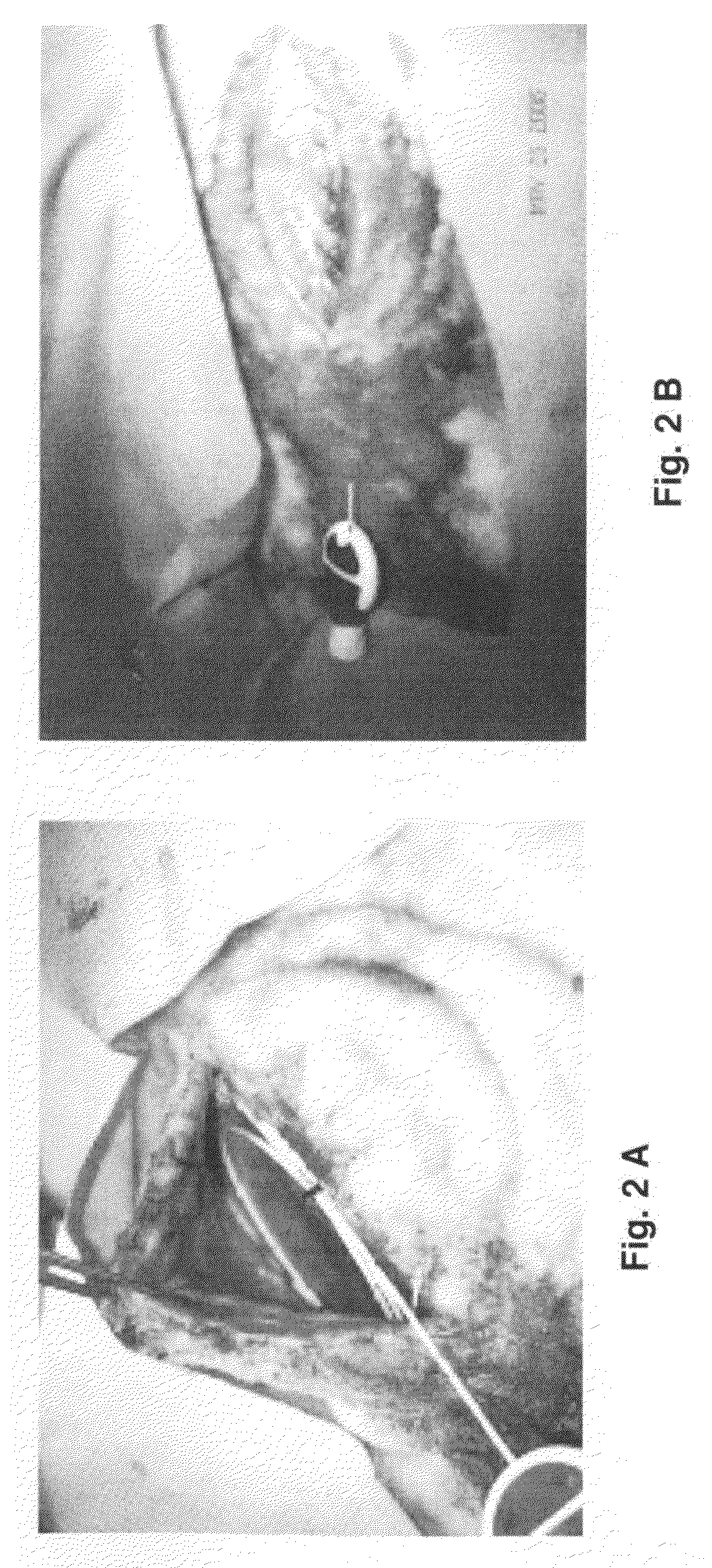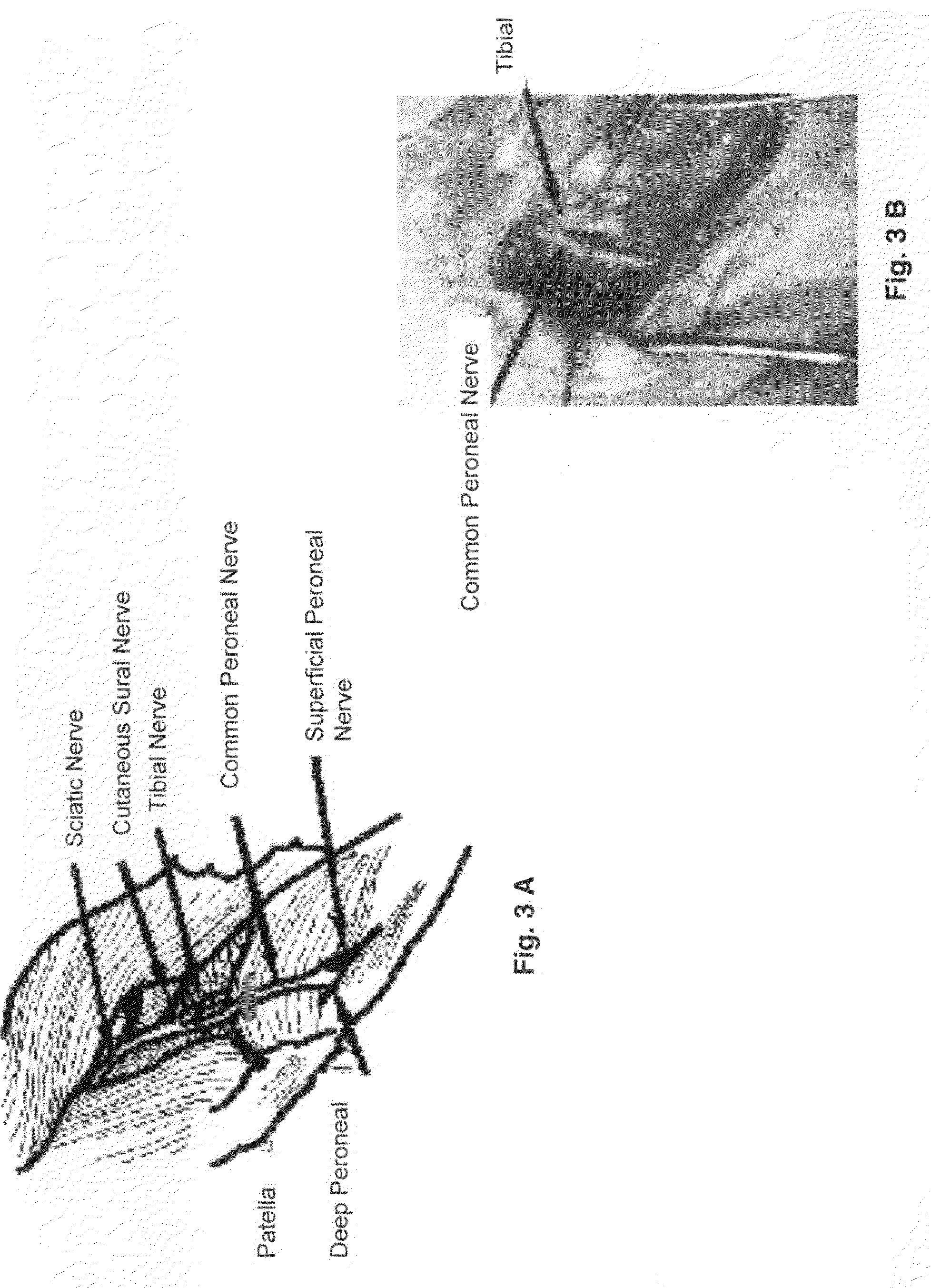Model of experimentally induced chronic pain and uses thereof
a neuropathic pain and experimentally induced technology, applied in the field of molecular neurology and animal models of pain, can solve the problems of limited clinical trial efficacy and safety prediction of rat models, inadequate current diagnosis based treatment of neuropathic pain conditions, and limited clinical trial efficacy and safety, so as to achieve the effect of reducing the effect of analgesic effect and persistent neuropathic pain
- Summary
- Abstract
- Description
- Claims
- Application Information
AI Technical Summary
Benefits of technology
Problems solved by technology
Method used
Image
Examples
Embodiment Construction
[0030]Thus, in one embodiment, the present invention provides a method for producing a non-human large mammalian model for persistent neuropathic pain with measured behavior, comprising the step of damaging the common peroneal nerve or a branch thereof in said non-human large mammal. The method may further comprising the step of applying a reproducible amount of force to elicit said measured behavior. Generally, the damage causes allodynia in said non-human mammalian model. Representative examples of means of causing said damage consists of surgical manipulation, including ligation, trans-section, compression, constriction, removal of a segment, and combinations thereof. Representative examples of non-surgical means of causing said damage including chemical, thermal, or radiative ablation and combinations thereof. Generally, the non-human large mammalian model includes ruminant mammals, canines, porcines, and felines. Preferably, the ruminant mammal is a sheep. One change in measure...
PUM
 Login to View More
Login to View More Abstract
Description
Claims
Application Information
 Login to View More
Login to View More - R&D
- Intellectual Property
- Life Sciences
- Materials
- Tech Scout
- Unparalleled Data Quality
- Higher Quality Content
- 60% Fewer Hallucinations
Browse by: Latest US Patents, China's latest patents, Technical Efficacy Thesaurus, Application Domain, Technology Topic, Popular Technical Reports.
© 2025 PatSnap. All rights reserved.Legal|Privacy policy|Modern Slavery Act Transparency Statement|Sitemap|About US| Contact US: help@patsnap.com



